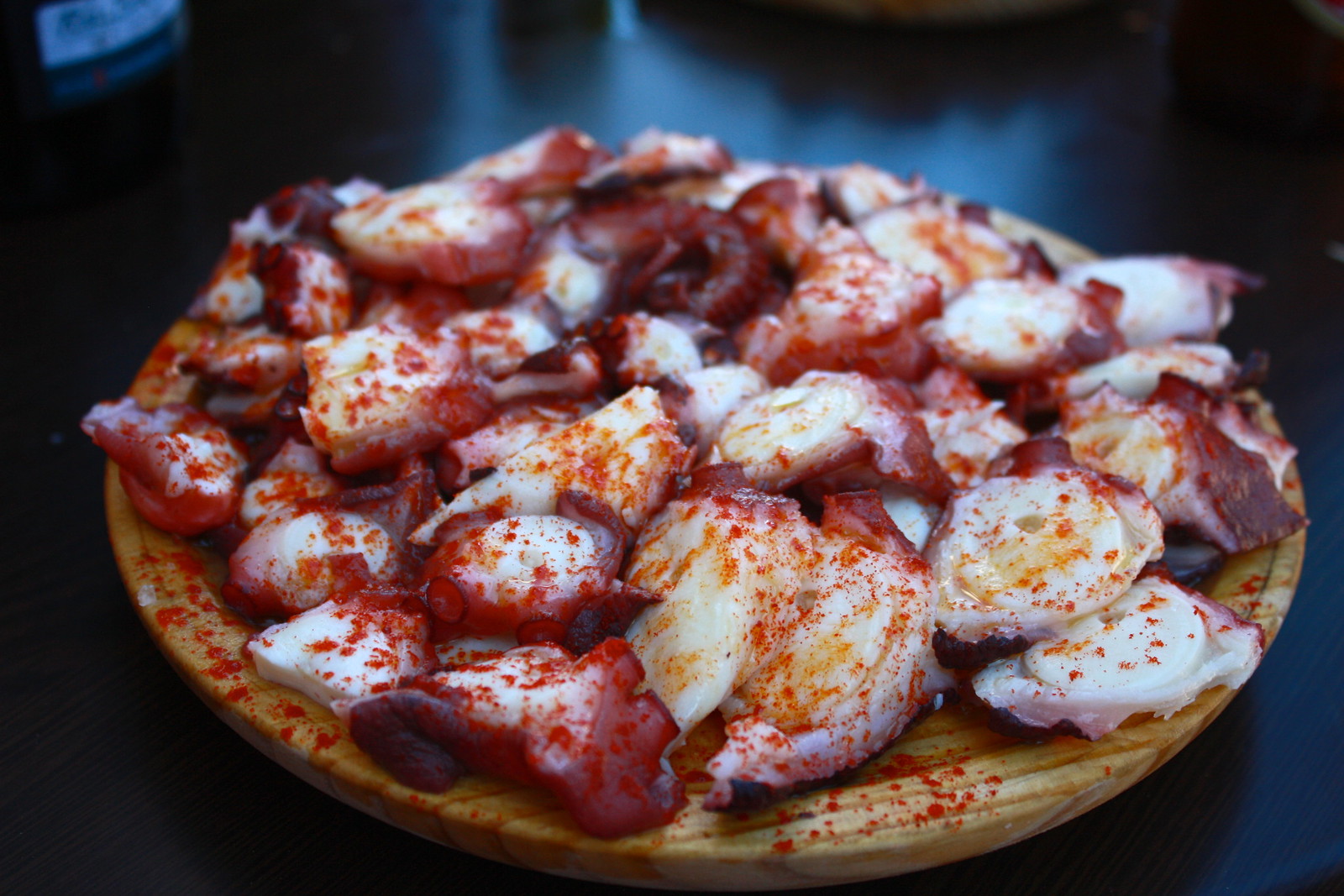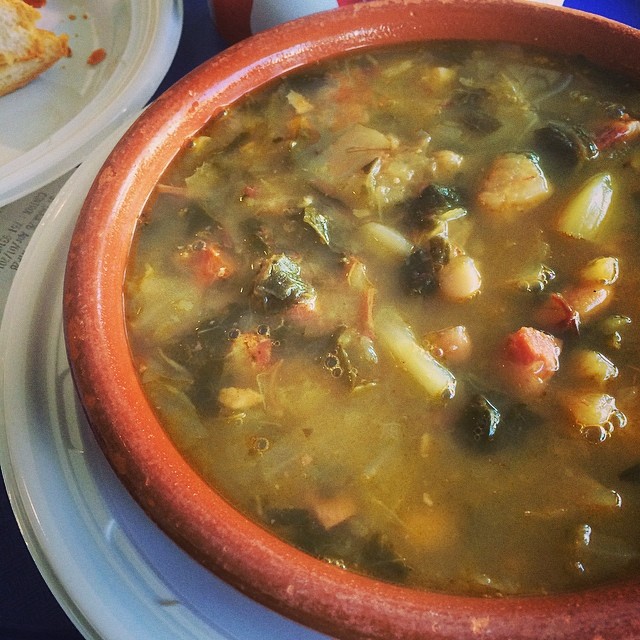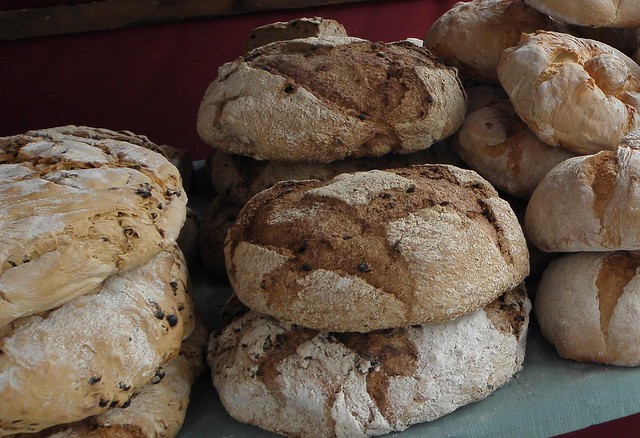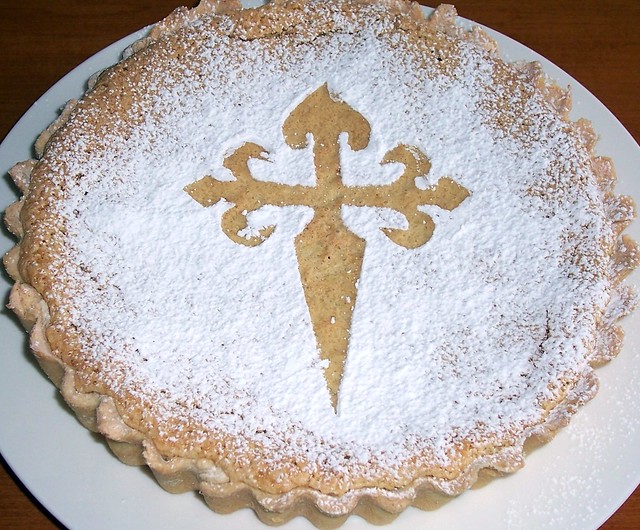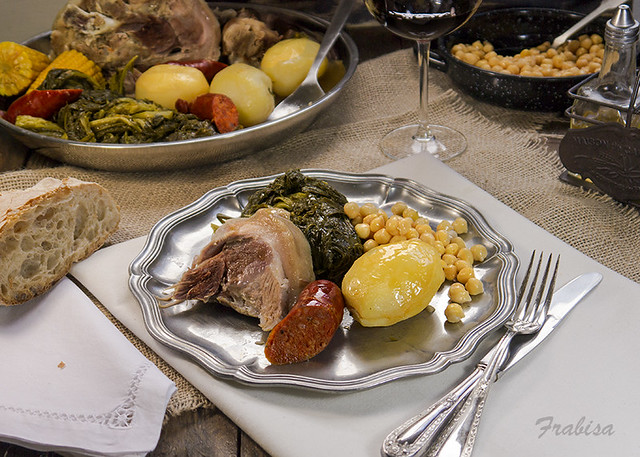The region of Galicia in the northwest part of Spain churns out the best food in the entire country. Give me some Galician food any day over expensive
Basque pintxos, refined Catalan cuisine, or the famine food of the central
meseta. I realize I’ve probably offended just about everybody, but exaggerations aside, but Galicia undeniably occupies a unique place on the Iberian peninsula that has allowed a rich cuisine to develop over the centuries. Bountiful seafood arrives inland from the region’s long, rugged coast; everything from corn to peppers to greens grow in a fertile, rain-blessed interior; and dairy cows stay happy with the mild Galician climate.
There’s a lot to see and do in this fascinating corner of the country, from Romanesque cathedrals and
Roman ruins to
glorious beaches and
thermal baths, but enjoying quality home cooking ranks pretty high up there on the list. If you don’t know what to order when visiting Galicia, try any (or all!) of the dishes below.
1) Polbo á feira (octopus)
“Fair-style octopus” consists of common octopus caught off the Atlantic shores of Galicia, boiled in a copper pot for up to an hour until nice and tender, then snipped into medallions and garnished with olive oil and smoked paprika. Often served with boiled potatoes,
pulpo a la gallega (as it’s called in Spanish) is the most emblematic of Galician food, and endless wooden platters of the stuff are served up during any of the region’s countless festivals and fairs (hence the
á feira in the name). Although you can find quality
pulpo anywhere in Galicia, head inland to places like
Lugo or
Ourense to get the
crème de la crème. And don’t worry—the suckers don’t stick to your mouth!
2) Pementos de Padrón (fried peppers from Padrón)
Spaniards aren’t known for spicy food, and I’ve even been told by some that black pepper is “spicy.” This makes the normally mild peppers from
Padrón all the more exciting to eat as they flame up only once in a blue moon. As the Galician saying goes, “
os pementos de Padrón: uns pican e outros non”—“peppers from Padrón: some are spicy and others aren’t.” Most of these tiny green peppers won’t set your mouth on fire like a jalapeño will, though, so it’s safe to order whole platters of these guys and get to chompin’ on their delightful, veggie freshness.
3) Queixo (cheese)
If sheep dominate Spain’s
meseta or central plateau, then dairy cows take their place along the country’s northern coast. Galicia is no exception to this rule, so it’s no surprise that cows’ milk cheeses are produced here. The most widespread cheese is
tetilla, named for its resemblance in shape to a woman’s breast. Pale yellow with a natural rind and a mild flavor, so-called “titty cheese” goes great when paired with some
membrillo or sugary quince paste. Cheese from
Arzúa is very similar but is softer and more buttery, almost spreadable. And
San Simón da Costa, made in Lugo province, is similar to tetilla yet firmer. I love its nice, smoky flavor.
4) Empanada (meat pie)
Empanada is my go-to pastry of choice when I go to the bakery on an empty stomach and don’t feel like cooking, but it also makes a great first course if it’s available on a Galician
menú del día or fixed-price meal deal. Between two layers of flaky pie crust hide scrumptious fillings like onions, bell peppers, tomato, and meats ranging from tuna, sardines, or cod (with or without raisins) to pork loin or cockles. These pastries are perfect for a snack on the
train or as part of a larger spread for a picnic in the park on a (rare) sunny day.
5) Caldo galego (Galician stew)
The word
caldo in Galician literally means “broth,” but this recipe is about as far a cry from the watery stock that word might bring to your mind. Small Galician potatoes boil together with chunky white beans, vitamin-rich greens, creamy pork fat, and usually chorizo, ribs, and other cuts of pork to create a warm, fortifying stew. You’ll have to sop up the last few drops with bread, it’s just that good!
6) Mariscos (seafood)
Octopus aside, the Galician coasts provide an abundance of
seafood of all shapes and sizes, which are most often simply boiled or steamed and served with lemon. You can typically find the following shellfish and crustaceans on a restaurant menu here: clams, cockles, razor clams, mussels, oysters, scallops, Norway lobsters, shrimp, lobster, velvet crab, spider crab, brown crab, and *takes breath* goose-neck barnacles. If you can’t decide on just one, you can always order a
mariscada or huge seafood platter. They’re expensive, but definitely worth it.
7) Pan (bread)
It might not seem like bread would be anything too special to merit a spot on this list, but once you try
pan galego (Galician bread), you’ll soon agree that it’s some of the nicest in the country. Made with brown Galician wheat instead of the bleached Castilian grain, Galician bread is much softer, moister, and a little bit more rustic than the bread you’ll receive at restaurants elsewhere in Spain.
8) Tarta de Santiago (Santiago almond cake)
Nothing too complex,
tarta de Santiago is made from ground almonds, sugar, and eggs baked together and then sprinkled with powdered sugar over a reverse stencil of the Cross of St. James. As in many typical Spanish sweets, the fragrant flavor of the almonds combines nicely with sugar to create a subtle, yet delightful, dessert. Many convents sell tarta de Santiago to the public, among other goodies, and the San Paio de Antealtares convent behind the cathedral in Santiago even provides cakes to the King of Spain!
9) Lacón con grelos (pork shoulder with greens)
Lacón con grelos has a little bit of everything that makes Galicia go round:
lacón or salted pork shoulder,
grelos or local greens, chorizo, Galician potatoes, and sometimes chickpeas. It’s a really hearty dish and a great introduction to Galician cuisine.
10) Churrasco (barbecue)
Galicia has traditionally sent emigrants abroad due to poverty and lack of jobs. The past few decades have turned things around, however, and many Galicians who left for places like New York, Switzerland, or Argentina have come back home. It’s not uncommon, even today, for many people to have a cousin or relative living on the other side of the Atlantic, and I’ve met my fair share of Argentines while in Galicia.
Because of this reverse emigration,
los argentinos have brought to Galicia their famous tradition of roasted meat,
asado. While beef might be more popular in Buenos Aires, it’s easy here to find a quality
churrasco or roast of pork ribs, veal steak, and
criollo sausage, sometimes served with a chimichurri sauce.
Have you tried anything on this list before? What sounds most appealing (or least!)? Tell me in the comments section below!
